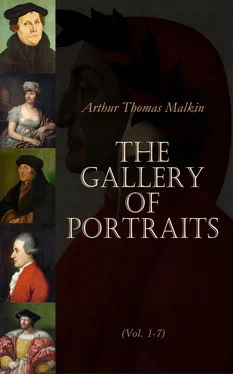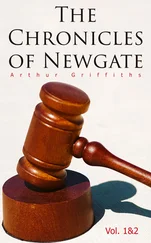Still, however, there was a radical defect in the atmospheric engine, inasmuch as the air being admitted into the cylinder at every stroke, a great deal of heat was abstracted, and a proportionate quantity of steam wasted. To remedy this, Watt excluded the air from the cylinder altogether; and recurred to the original plan of making steam the moving power of the engine, not a mere agent to produce a vacuum. In removing the difficulties of construction which beset this new plan, he displayed great ingenuity and powers of resource. On the old plan, if the cylinder was not bored quite true, or the piston not accurately fitted, a little water poured upon the top rendered it perfectly air-tight, and the leakage into the cylinder was of little consequence, so long as the injection water was thrown into that vessel. But on the new plan, no water could possibly be admitted within the cylinder; and it was necessary, not merely that the piston should be air-tight, but that it should work through an air-tight collar, that no portion of the steam admitted above it might escape. This he accomplished by packing the piston and the stuffing-box, as it is called, through which the piston-rod works, with hemp. A farther improvement consisted in equalizing the motion of the engine by admitting the steam alternately above and below the piston, by which the power is doubled in the same space, and with the same strength of material. The vacuum of the condenser was perfected by adding a powerful pump, which at once drew off the condensed, and injection water, and with it any portion of air which might find admission; as this would interfere with the action of the engine, if allowed to accumulate. His last great change was to cut off the communication between the cylinder and the boiler, when a portion only, as one-third or one-half, of the stroke was performed; leaving it to the expansive power of the steam to complete it. By this, economy of steam was obtained; together with the power of varying the effort of the engine according to the work which it has to do, by admitting the steam through a greater or smaller portion of the stroke.
These are the chief improvements which Watt effected at different periods of his life. Of the patient ingenuity by which they were rendered complete, and the many beautiful contrivances by which he gave to senseless matter an almost instinctive power of self-adjustment, with precision of action more than belongs to any animated being, we cannot speak; nor would it be easy to render description intelligible without the help of diagrams. His first patent bears date June 5, 1769, so that some time elapsed between the invention and publication of his improvements. The delay arose partly from his own want of funds, and the difficulty of finding a person possessed of capital, who could appreciate the merit of his invention; partly from his own increasing occupation as a civil engineer. In that capacity he soon acquired reputation, and was employed in various works of importance. In 1767 he made a survey for a canal, projected, but not executed, between the Clyde and Forth. He also made the original survey for the Crinan Canal, since carried into effect by Mr. Rennie; and was employed extensively in forming harbours, deepening rivers, constructing bridges, and all the most important labours of his profession. The last and greatest work of this kind on which he was employed, was a survey for a canal between Fort William and Inverness, where the Caledonian Canal now runs.
At last Dr. Roebuck, the establisher of the Carron iron-works, became Watt’s partner in the patent, upon condition that he should supply the necessary funds for bringing out the invention, and receive in return two-thirds of the profit. That gentleman, however, was unable to fulfil his share of the contract, and in 1774 resigned his interest to Mr. Boulton, the proprietor of the Soho works, near Birmingham. Watt then determined to remove his residence to England; a step to which he probably was rendered more favourable by the death of his wife in 1773. In 1775, Parliament, in consideration of the national importance of Mr. Watt’s inventions, and the difficulty and expense of introducing them to public notice, prolonged the duration of his patent for twenty-five years.
The partners now erected engines for pumping water upon a large scale, and it was found by comparative trials that the saving of fuel amounted to three-fourths of the whole quantity consumed by the engines formerly in use. This fact once established, the new machine was soon introduced into the deep mines of Cornwall, where, of all places, its merits could best be tried. The patentees were paid by receiving one-third of the savings of fuel. From the time that the new value of their invention was fully proved, Messrs. Boulton and Watt had to maintain a harassing contest with numerous invaders of their patent rights; and it was not until near the expiration of the patent in 1800, that the question was definitively settled in their favour. These attacks, however, did not prevent Watt from realizing an ample fortune, the well-earned reward of his industry and ability, with which he established himself at Heathfield, in the county of Stafford.
At one period Watt devoted much attention to the construction of a rotary engine, in which the power of the steam should be applied directly to produce circular motion. Like all who have yet attempted to solve this problem, he failed to obtain a satisfactory result; and turned his attention in consequence to discover the best means of converting reciprocal into rotary motion. For this purpose he originally intended to use the crank; but having been forestalled by a neighbouring manufacturer, who took out a patent for it, having obtained his knowledge, as it is said, surreptitiously from one of Watt’s workmen, he invented the combination called the sun and planet wheels. Afterwards he recurred to the crank, without a shadow of opposition from the patentee. He was also the author of that elegant contrivance, the parallel motion, which superseded the old-fashioned beam and chain, and rendered possible the introduction of the double engine, in which an upward, as well as a downward force is applied.
His attention, however, was not confined to the subject of steam. He invented a copying machine, for which he took out a patent, in 1780. In the winter of 1784–5, he erected an apparatus, the first of its kind, for warming his apartments by steam. He also introduced into England the method of bleaching with oxymuriatic acid, or chlorine, invented and communicated to him for publication by his friend Berthollet. Towards the conclusion of life, he constructed a machine for making fac-similes of busts and other carved work; and also busied himself in forming a composition for casts, possessing much of the transparency and hardness of marble.
With chemistry Watt was well acquainted. In 1782 he published a paper in the Philosophical Transactions, entitled, ‘Thoughts on the constituent parts of Water, and of Dephlogisticated Air.’ His only other literary undertaking was the revision of Professor Robison’s articles on Steam and Steam Engines, in the Encyclopædia Britannica, to which he added notes containing an account of his own experiments on steam, and a history of his improvements in the engine.
About the year 1775 he married his second wife, Miss Macgregor. Though his health had been delicate through life, yet he reached the advanced age of eighty-four. He died at his house at Heathfield, August 25, 1819. Chantrey made a bust of him some years before his death; from which the same distinguished artist has since executed two marble statues, one for his tomb, the other for the Hunterian Museum at Glasgow; and a third in bronze, also for Glasgow, which has recently been erected there. It represents Watt seated in deep thought, a pair of compasses in his hand, and a scroll, on which is the draught of a steam-engine, open on his knee.
Читать дальше












